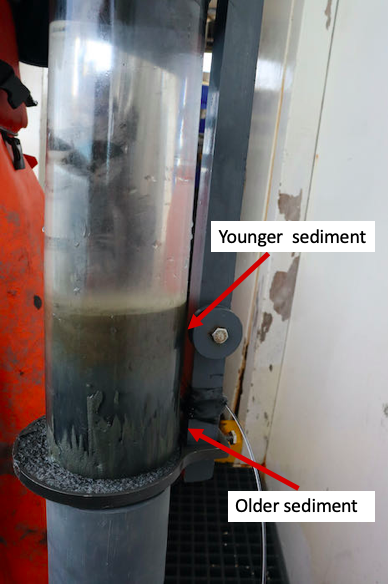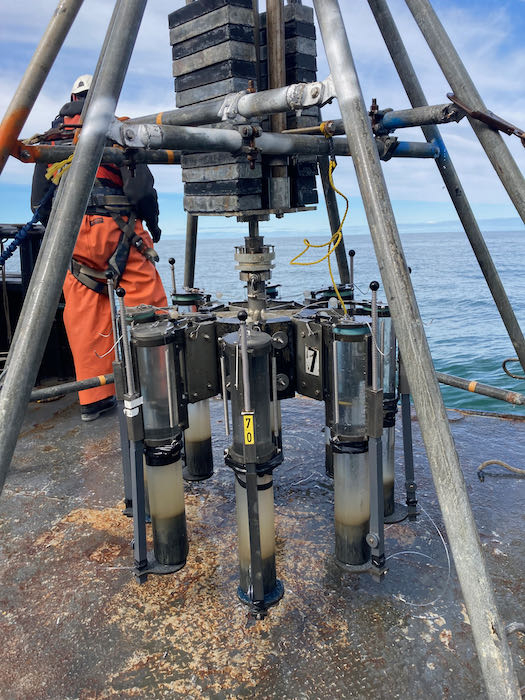Looking into the Past
Although we have learned a great deal, many things are unknown about HABs (Harmful Algal Blooms) in northern Alaska. For example, we don’t really know the history of blooms in this area. When did they start? How big have they been in the past? One way that scientists try to answer these questions is by taking sediment cores.

Sediment cores provide a cross-section of the seafloor sediment. They are a window into the past.
Imagine it is winter. Each time it snows, more snow piles up on the ground. If you dig down into the snow, the snow from the first snowstorm of the winter will be on the bottom, and the newest snow, from the most recent snow storm, will be on top.
The same is true for seafloor sediment. Particles are constantly drifting down from the surface to the seafloor. When they hit bottom, they are added to the sediment. Just like the snow in winter, the oldest sediments are deeper and the newest sediments are on top. When scientists want to know about the history of the ocean, they take a sediment core to find out what happened in the past.
So how did we use our sediment cores to learn about the history of Alexandrium cysts in the Chukchi Sea?
First, we dropped the multi-corer onto the seafloor to collect the cores.




Then, we collected two types of samples from each section of core. The first sample will be analyzed to find out how many cysts are at each depth. The second sample will be analyzed to find out the age of each layer of sediment. When you combine the number of cysts in a given layer with the age of the layer, a picture of the past starts to emerge. For example, if the scientists find a lot of cysts in the layer 5 centimeters deep, and they are able to date those sediments to five years ago, it could be a sign that there was a big bloom that year.


Comments